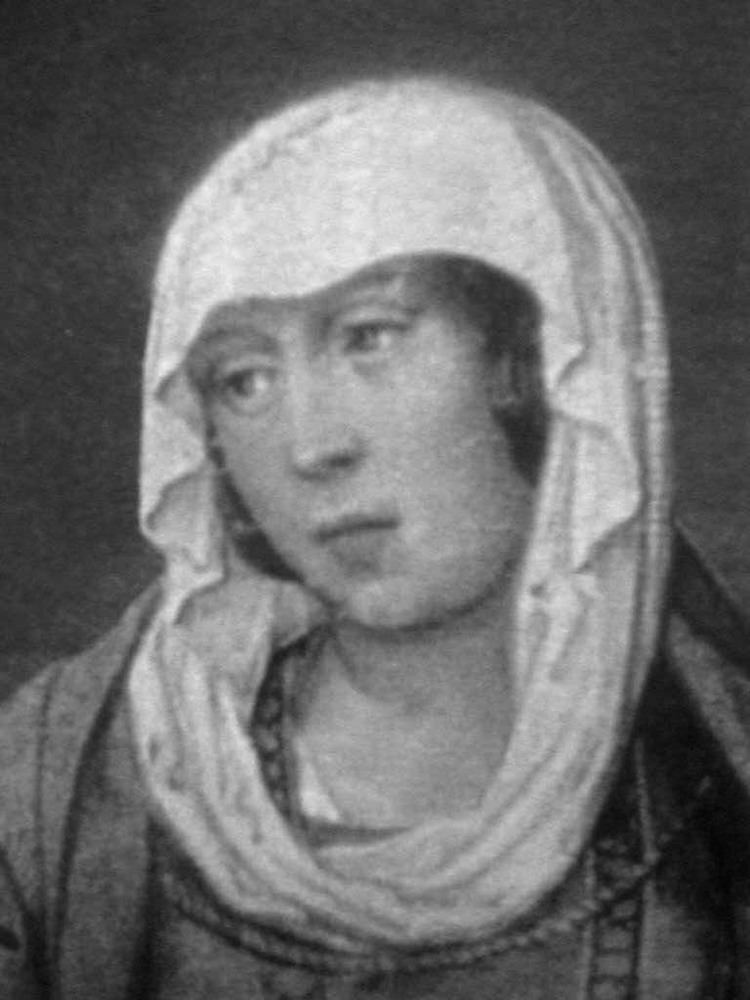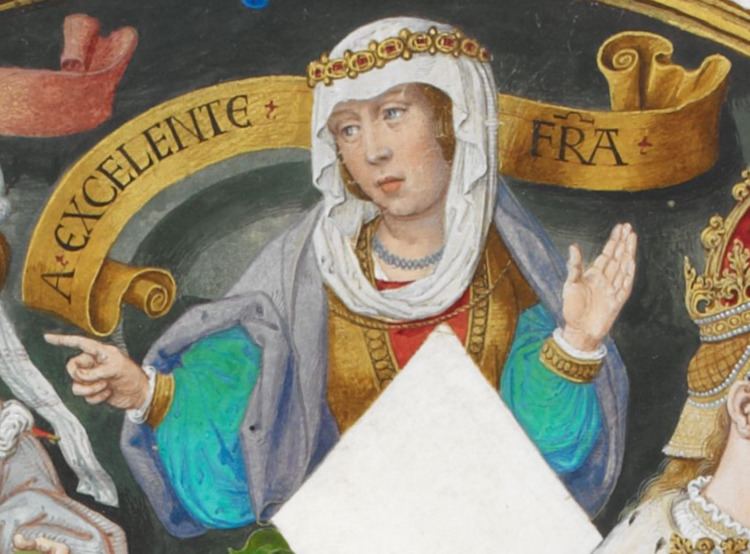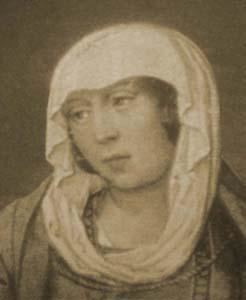House House of Trastamara Role King | Name Joanna Beltraneja Religion Roman Catholicism | |
 | ||
Tenure 30 May 1475 – 11 November 1477 Tenure 15 November 1477 – 28 August 1481 Parents Henry IV of Castile, Joan of Portugal Cousins Joanna of Castile, Catherine of Aragon, John II of Portugal, Isabella of Aragon - Queen of, Maria of Aragon - Queen of Similar People Henry IV of Castile, Joan of Portugal, Isabella I of Castile, Beltran de la Cueva - 1st Duke, Afonso V of Portugal | ||
Joanna la Beltraneja (21 February 1462 – 12 April 1530) was a claimant to the throne of Castile, and queen of Portugal as the wife of King Afonso V, her uncle.
Contents

Birth

Henry IV of Castile married Joan of Portugal, the youngest sister of King Afonso V of Portugal, on 21 May 1455. Seven years later, a daughter, Joanna, was born.
Henry had previously been married to Blanche of Navarre. After thirteen years, that marriage was annulled on the grounds that it had never been consummated. This was attributed to a curse, which only affected the king's relationship with his wife; a number of prostitutes from Segovia testified that they had noticed no impairment.
The king had no other children and was rumoured to be impotent. Whether true or not, it was widely circulated by Henry's opponents that the little infanta was the child of Beltrán de la Cueva, a royal favorite at court. They called her la Beltraneja, a mocking reference to her supposed illegitimacy.
Her mother was banished to Bishop Fonseca's castle where she fell in love with Fonseca's nephew and became pregnant. Henry divorced her in 1468.
Heir to the throne
On 9 May 1462, Joanna was officially proclaimed heir to the throne of Castile and created Princess of Asturias. Henry had the nobles of Castile swear allegiance to her and promise that they would support her as monarch.
Many of the more prominent nobles, seeking to increase their own power, refused to recognize Joanna, preferring that Henry name as heir his younger half-brother, Infante Alfonso. Armed conflict broke out and in 1464 the league of nobles forced Henry to repudiate Joanna and recognize Infante Alfonso as his heir. Alfonso then became Prince of Asturias, a title traditionally held by the heir apparent. Henry agreed to this compromise with the stipulation that Infante Alfonso would marry Joanna (his niece), to ensure that they both would receive the crown.
But in 1468, Infante Alfonso died, and also Henry divorced Joanna's mother. This resulted in Joanna's displacement in the succession. Her half-aunt, Infanta Isabella, was placed before her in the succession, although Joanna was considered the heir after Isabella.
Joanna was held in custody by the Mendoza family in 1465–1470, and by Juan Pacheco in 1470–1475. There were many negotiations for her marriage to someone who could defend her succession. On 26 October 1470, she was betrothed and then married by proxy to Charles, Duke of Guienne, brother of Louis XI of France, and again proclaimed as legitimate heir to the throne. But Charles died in 1472. After a few unsettled arrangements, which included French and Burgundian princes, Joanna was promised in marriage to her maternal uncle, King Afonso V of Portugal, who swore to defend her (and his own) rights to the crown of Castile.
When Henry died in 1474, she was recognized as Queen by some noble factions, while others recognized her half-aunt Isabella as Queen. This began the four-year War of the Castilian Succession.
In addition to the King of Portugal, Joanna was supported by some of the high Castilian nobility and by descendants of Portuguese families that settled in Castile after 1396: the Archbishop of Toledo (Alfonso Carrillo de Acuña); the powerful Marquis of Villena Diego López Pacheco; the Estúñiga family, with lands bordering Portugal; Rodrigo Ponce de León, Marquis of Cádiz; and the Grand Master of the Order of Calatrava, Rodrigo Téllez Girón.
On the other hand, Isabella was supported by Crown Prince Ferdinand of Aragon (whom she married), and by most of the Castilian nobility and clergy: the powerful House of Mendoza; the Manrique de Lara family; Enrique de Guzmán, 2nd Duke of Medina Sidonia; Beltrán de la Cueva; the Order of Santiago; and the Order of Calatrava, except its Grand Master.
Throne claimant
On 10 May 1475 Afonso V of Portugal invaded Castile and married Joanna in Plasencia, 15 days later. Joanna and Afonso held court at Toro, and she was considered a promising ruler by her courtiers, though too young. Joanna sent a letter to the cities of Castile, expounding the wish of her father that she should rule, and proposed that the cities vote for which succession they wished should be recognized. However, Joanna found fewer supporters than expected. Isabella I's husband Ferdinand led her forces against the Juanista army.
Both armies met at Toro (1 March 1476). Afonso V was beaten by the left and center of Ferdinand’s army, and fled from the battlefield. His son Prince John defeated the Castilian right wing, recovered the lost Portuguese Royal standard, and held the field, but overall the battle was indecisive. Even so, the prestige of Juana and Afonso dissolved.
"That is the battle of Toro. The Portuguese army had not been exactly defeated; however, the sensation was that Donna Joanna’s cause had completely sunk. It made sense that for the Castilians Toro was considered as divine retribution, the compensation willed by God for the terrible disaster of Aljubarrota, still alive in the Castilian memory."
After this, Afonso tried without success to form an alliance with Louis XI of France. In 1478, the marriage of Joanna and Afonso was annulled by Pope Sixtus IV on grounds of consanguinity, ending her tenure as Queen consort of Portugal. She was also forced to renounce her titles as Infanta of Castile and Queen regnant of Castile.
Later life
In 1479, Afonso renounced his pretension to the Castilian crown and signed a treaty with Isabella and Ferdinand. Joanna was given a choice: enter a convent, or marry Isabella's one-year-old son Juan when he came of age (and if he then consented). Joanna chose to enter the Convent of Santa Clara in Coimbra, and the ceremony was witnessed by Isabella, who praised her decision. She was not incarcerated in the convent, and was eventually allowed to reside in the Castle of São Jorge in Lisbon. In 1482, King Francis of Navarre, nephew of Louis XI of France, proposed to her, with the implication of again raising her claim to Castile. This was intended as a French warning to Isabella and Ferdinand, who threatened Roussillon. But Francis died soon after. Isabella died in 1504, and it is alleged that, as a maneuver to retain control of Castile, rather than have his son-in-law Philip succeed there, Ferdinand then proposed marriage to Joanna, but she refused.
Joanna signed her letters "La Reina" ("the Queen"), until she died. She died in Lisbon, having survived her aunt Isabella I. Joanna's claim to Castile was extinguished at her death; her heir would have been her cousin Juana, Isabella's daughter, who was already Queen of Castile.
